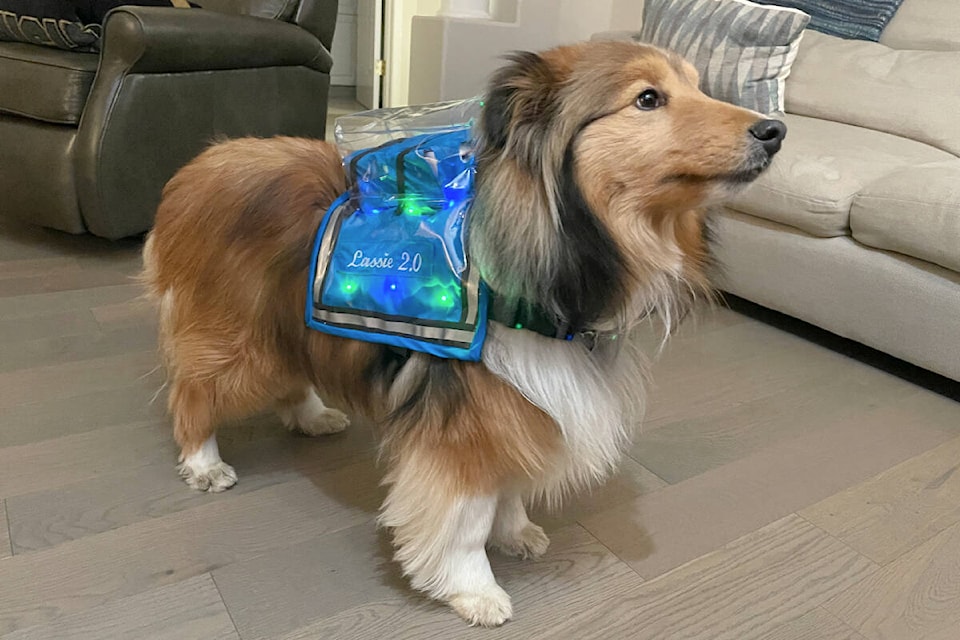A Quesnel Secondary School alumnus is excited to earn provincial honour in Alberta for helping create a life alert system that a service dog can activate in an emergency.
Brandon Lindsay is a former Northern Alberta Institute of Technology (NAIT) biomedical engineering technology student who has been named a finalist with Michelle Gariepy and Roseveer Salh for the 2022 Capstone Project of the Year Award by the Association of Science and Engineering Technology Professionals of Alberta (ASET).
Their invention, Lassie 2.0 life alert system, communicates the need for human assistance through three components: a wearable handler’s device with a large push button, a special service dog vest and a mobile app.
The service dog pushes the large button on the device when their handler requires help to automatically open a mobile app that sends a message to the handler’s emergency contact, providing their GPS location. The mobile app also switches on the service dog’s vest, causing lights and a siren to go off to attract help from someone nearby.
“I helped design and build the circuitry of the project itself,” Lindsay said. “At first I thought it was just a cool little project to end my schooling on, but the more we got into it, the more we that we could see what the final project could become, the more it inspired us, and hopefully, it inspires other people to try their own projects.”
Lindsay, Gariepy and Salh delved into their project in January 2022 after some brainstorming and research.
They had learned of a woman’s service dog that went to get assistance after she had fallen in 2018. Unfortunately, the person within the immediate vicinity did not understand the dog’s attention-seeking behaviour and was resistant to offering help.
“Our team realized that there needed to be a solution to help alleviate this disconnect and avert potential tragedies in the future,” Gariepy said in a news release. “Because service dogs undergo two to three years of dedicated training before being certified, our team was fully confident a service dog could accomplish the required task with ease.”
ASET CEO Barry Cavanaugh called Lassie 2.0 a brilliant invention that has the potential for real-world use, especially if its market rollout is implemented in partnership with a service dog organization.
Lindsay is currently employed by a private company in Calgary, where he works repairing and installing various X-ray systems.
He still keeps in touch with Gariepy and Salh, who have also started their careers as biomedical engineering technologists in Edmonton.
Lindsay moved to Alberta 16 years ago and previously worked in corrections.
“I’m super happy with how the project turned out in general, but I think being able to design and have a hand in something that can positively impact so many people in their lives in the day-to-day world is just so incredible.”
Read More: New rules to ensure access for guide dogs
Do you have something to add to this story, or something else we should report on? Email: rebecca.dyok@quesnelobserver.com
Like us on Facebook and follow us on Twitter.
